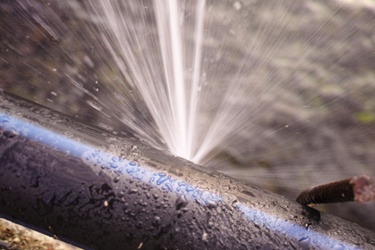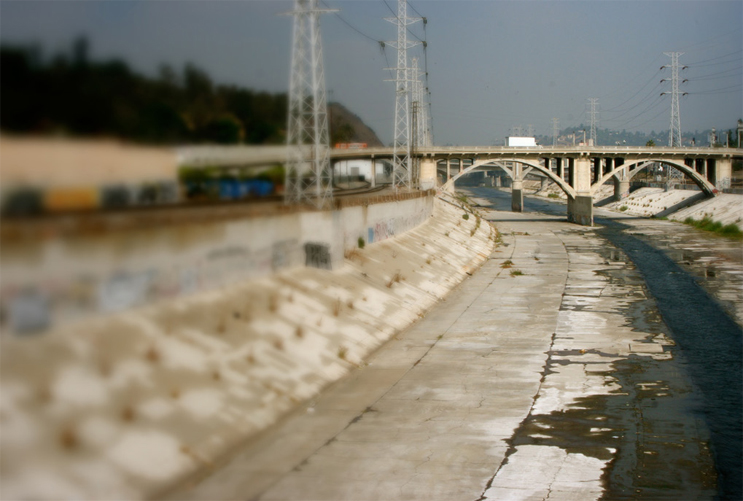How Acoustic Leak-Sensing Devices And Data Analytics Can Save Billions Of Gallons Of Water
By Rob Sibley

Failing infrastructure and water scarcity are two major issues for U.S. water utilities. One technology could help mitigate both problems.
As historic heat waves and droughts grip the country, water scarcity has emerged as a critical challenge across the western United States. Recently, for the first time in American history, the federal government declared a water shortage at Lake Mead, a critical reservoir feeding the Colorado River. The move has triggered cuts in the water supply that will ultimately impact up to 40 million people in the Southwest.
In California, the situation is particularly dire. The issue is now an emergency, with the governor recently mandating that utilities reduce water consumption by 15 percent. As the population continues to grow and temperatures continue to rise, water scarcity will only get worse throughout the state.
To address water scarcity issues, policymakers and stakeholders typically focus on two areas: 1) urging individual consumers to cut back on water usage, and 2) building major new infrastructure, such as desalination plants and dams, to boost the water supply. But these have drawbacks. For one, relying on individuals to conserve water will only ever have a minor impact on overall consumption. Second, while major infrastructure projects do provide tremendous value in increasing the water supply, they require significant investment and take decades to complete. This is a problem that needs a shorter-term solution.
Luckily, there are much quicker and less costly ways to address water scarcity: leak detection and analytics. According to self-reported data, California water utilities are losing roughly 97.4 billion gallons of water through leakage in their distribution system. [See chart, p. 19.] Though some of that leakage may not be addressable, Itron calculates that approximately 27 billion gallons can be recovered. That would supply the needs of roughly 850,000 households. (Visit this resource and click on a utility to see its individual data.)
California utilities — and utilities throughout the U.S. — can begin to recover billions of gallons of water by leveraging Industrial Internet of Things (IIoT) technology. Acoustic leak-sensing devices and data analytics make it possible to rapidly discover and locate leaks, which are the most difficult aspects of leak mitigation and why so many leaks aren’t being repaired in a timely manner. These solutions can be deployed quickly and require far smaller investments than traditional infrastructure projects, providing much-needed relief in the short term.

*Totals are the sum of the last fully reported year for each California utility. If 2020 data are missing or incomplete for a given utility, the latest prior year that is complete was included.
**Recovering this leakage requires physical modernization of the distribution infrastructure
Throughout the U.S., there are far more small water utilities than larger ones, many of which have not yet adopted these modern IIoT solutions. Without this technology, discovering leaks is a slow and cumbersome affair, with utilities sending technicians to survey miles of pipe infrastructure and literally listen for leaks. These surveys can take months or longer to complete, all while the water losses mount.
This approach is so inefficient that leaks are normally first discovered by customers. Customers will stumble upon a small sinkhole forming in their yard or notice water trickling into their driveway. Even when a technician finds and repairs a leak, another one will often spring up elsewhere due to the altered equilibrium within the piping.
In contrast, acoustic leak-sensing devices and analytics save considerable time and labor costs. By feeding data from pressure and flow sensors into analytics engines and machine-learning applications, utilities can quickly identify areas where considerable leakages exist within their territory. The deployment of acoustic leak sensors further enhances the utility’s capabilities by detecting individual leaks (pre-existing and emerging) with greater accuracy. These two methods effectively provide a daily leak survey of the utility’s territory, thus enabling the optimization of utility resources by showing them where not to go. In addition, advanced analytics can be implemented to determine the priority of leak repairs and provide insights into future areas where leaks are most likely to occur.
The federal government must commit resources to help utilities adopt sensor and data analytics technology. Without help, small utilities will continue to struggle with the economics of recovering water. Digging up pipes to modernize infrastructure is costly. Unfortunately, even the investment required to deploy sensors and enable a data-based approach may be more than what an individual utility can afford.
However, with a relatively minor investment of infrastructure funds from the government, utilities would be able to deploy IIoT and analytics technology and realize their benefits within a year. Those benefits will extend for decades. The federal government must act with urgency to address and subsidize these deployments. This will incentivize utilities to effectively act on the issues they are facing and to address water loss and the broader social costs.

With increasing water scarcity, water losses affect everyone’s quality of life. They lead to water restrictions, poor water pressure, and reduced agricultural output, among other impacts. Increasing water supply through major infrastructure projects can help, but we also must use the water we have more wisely. Mitigating addressable leakage through acoustic leak-sensing devices and data analytics is the best way to achieve the quickest ROI.
Support from the federal government could enable every utility to deploy these technologies and provide a clear ROI now and for decades in the future. Federal action could collectively save hundreds of billions of gallons of water across the country over the next 10 years and improve quality of life for millions of Americans.
About The Author
 Rob Sibley is the vice president of global professional services delivery for Itron.
Rob Sibley is the vice president of global professional services delivery for Itron.
